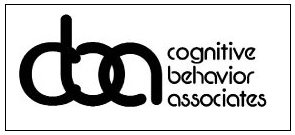Body Focused Repetitive Behaviors
Millions of people around the world suffer from Body-Focused Repetitive Behaviors (BFRBs). These are common and often misunderstood disorders. BFRBs can cause major mental and emotional distress. They also interfere with daily life. For example, about 2%-5% of the people around the world engage in Trichotillomania (TTM) behaviors, pulling hair from the head, face, or other parts of the body. About 5% have Excoriation Disorder (ED), which is an intense urge to pick, squeeze, or scratch the skin.
WithTTM, people pull out hair from the scalp, eyebrows, eyelashes, or elsewhere on the body. People do this in private or sometimes discreetly in public. The result often is visible hair loss. Sufferers describe mounting tension and a sense of relief, pleasure, or drop in anxiety after pulling out the hair. Efforts to stop TTM behavior are often attempted but repeatedly fail. In extreme cases of TTM, clients swallow the hairs they pick. This can require medical attention due to the causing intestinal blockages.
Meanwhile, those with ED target skin imperfections. Most common areas are the face, nails, cuticles, scalp, chest, legs, back, and lips. The behavior can arise from anxiety, negative feelings, and stressful events. Sufferers often can’t stop picking at their skin. Theymay engage in the behavior multiple times per day. As a result, ED can cause sores, abscesses, or damage the skin harshly. In extreme cases, the client may need a skin graft due to repeated picking in the same area.
Nervous Habit
BFRBs such as ED and TTM sometimes are viewed as a “nervous habit”.They can be diagnosed as a type of OCD or as a symptom of Body Dysmorphic Disorder. There are several theories as to the cause of BFRBs. Most common is that BFRB behaviors act to reduce stress or anxiety. The source of the stress or anxiety could be just about anything. This can include work, relationship, financial, and countless other stresses. In addition, some research points genetic or biological factors for BFRBs. Possible environmental factors can play a part. Also, an imbalance of the neurotransmitters dopamine and serotonin can affect BFRB.
It is important to note that BFRBs can start at any age. The onset of hair pulling can occur as early as age 5. Most BFRBs present before age 12. The onset of skin picking normally occurs during adolescence, between the ages of 14 and 16 years old.Yet, BFRBs can continue for a lifetime. Many clients are middle-aged or in their senior years. Also, BFRBs can occur in a wide range of people. All ethnicities can be affected. Lower income and higher income people can be affected. BFRBs do not discriminate.
Body Focused Repetitive Behaviors Treatment
Cognitive Behavioral Therapy (CBT) is the treatment of choice for BFRBs. Some individuals might find medication helpful. However, studies show that CBT is superior to medication alone. CBT works to identify the sensory, cognitive, emotional, situational, and other behaviors associated with BFRB behavior.At CBA, westart with a full assessment. Thisincludes a behavioral analysis. The analysis builds awareness of various factors and early warning signs. In session, the clinician and client work to create responses to the BFRBs behavior. The goal is to either compete with or satisfy urges. Competing behaviorscan counter BFRBs. This helps clients to handle the impulses better.
Other Treatment Options
Other treatments approaches are available as well. These include Acceptance and Commitment Therapy (ACT) and Dialectical Behavior Therapy (DBT). Both work to enhance CBT. ACT helps clients observe BFRB urges without judgment. They learn that the urges are justevents that do not need a response. The client learns tolerance rather than the need to control urges. Also, the client can then better commit to positive coping behaviors.
The DBT modules involve mindfulness, emotion regulation, and distress tolerance. They are used with traditional CBT. Distress tolerance helps clients to cope with BFRB urges without engaging in behaviors. Mindfulness helps clients tolerate internal and external triggers. The clients can stay in the present moment and learn to handle negative emotions. In turn, they can respond in more adaptive ways. The emotional regulation module helps clients identify and label uncomfortable emotions. This approach works with clients to reduce negative behaviorsand increase positive actions.
Living without BFRBs
At CBA, we know that treatment of BFRBs are a steady process. Setbacks are a normal part of moving forward. Learning from slip-ups and getting back on track is key. BFRBs can reoccur even after significant remission. Relapse can increase if clients believe that urges should completely go away or that it is a failure if the behavior reoccurs. Going back to aspects of treatment during vulnerable phases can be helpful. If those techniques are no longer effective, contact your clinician for more help. Ultimately, you deserve to live a better life without BFRBs. With the right help and guidance, this is possible. It requires work and patience. But, the result of a happier, less stressful life is worth the effort.

